I have been living in Suzhou and so far, I have managed to travel across 16 Chinese cities. China has so many interesting tourist attractions, including museums. Having seen quite a few historical sites in China, I feel that the Nanjing Massacre Memorial Hall is a different place altogether. I have written Nanjing City Travel Reviews (Part 1 and Part 2). In this post I’m going to exclusively talk about the Nanjing Massacre Memorial Hall. I will share some brief details, personal observations, along with the photos that I clicked in the memorial.
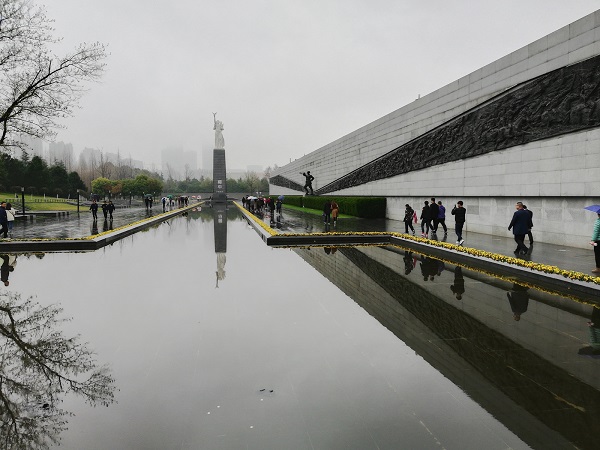
My visit to Nanjing Massacre Memorial Hall
In fact, a visit to this museum was on my wish list for a long time. So, when I reached Nanjing, after checking into my hotel, I immediately headed to visit the memorial. I don’t have words to describe my feelings about how I felt during my trip to the museum.
I saw the photos and videos of the war crimes committed in Nanjing and I often felt like breaking down – I was indeed feeling highly emotional. there were many kids around I wanted to talk to them to assure them that we are now much safer. In particular, I wanted to tell them that this part of history won’t repeat again.
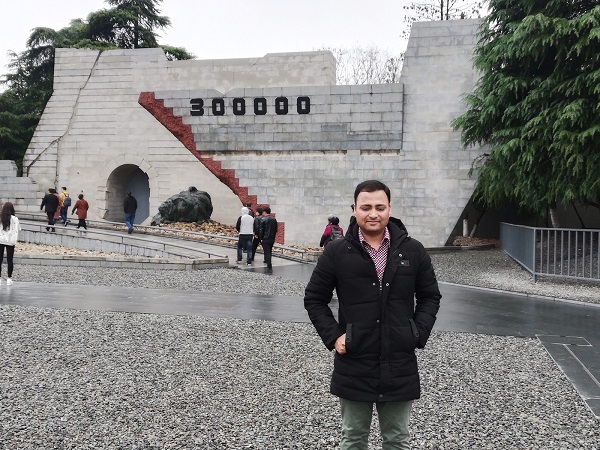
Nanjing Massacre
The massacre took place in Nanjing city (Jiangsu, China) in 1937. Thousands of people died during the violence. Based on the documents and records at the museum, it seems that nearly 300,000 people died in Nanjing massacre. Wikipedia’s Nanking Massacre page provides a good compilation of information. I took a video of the simulated firing in the museum, check this one out from my YouTube channel-
The museum
The official name of the massacre museum is “Memorial Hall of the Victims in Nanjing Massacre by Japanese Invaders”. Here you can see the comprehensive details of the massacre. The clothes, graves, damaged houses, etc. are all well-preserved. Free entry.
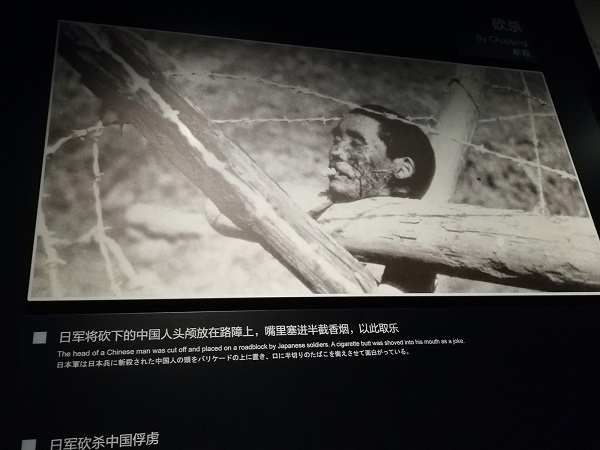
The museum site
Nanjing’s most famous memorial is located on the site where thousands of massacre victims were buried. The nearest subway station is the Yunjin Road station (云锦路, Yúnjǐn lù), take Exit 2 and you will see a long queue moving slowly to enter the museum. You can find the museum using Baidu Map. The museums host beautiful lawns, burial sites, gardens, etc. You can easily spend nearly a half-day here.
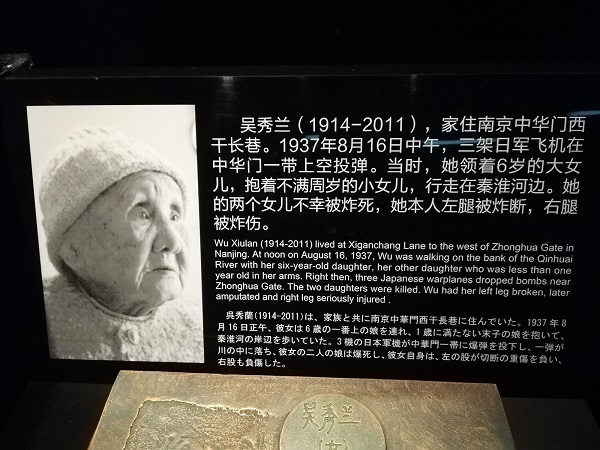
The Mass Graves
The museum has at least two mass grave sites that I saw – one of them reportedly had more than 10,000 corpses buried during the massacre.
The remains are now open to public display and can be seen from a bit far inside the grave chamber.
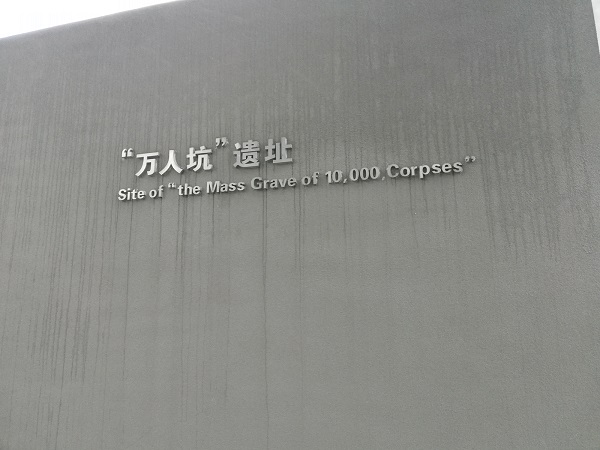
Let me show you the remains-
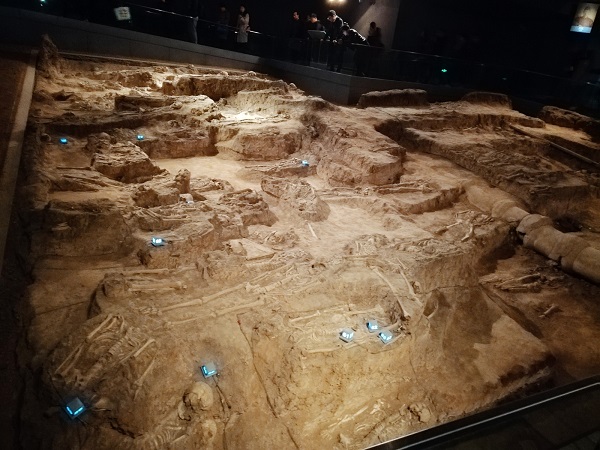
Here is another site-
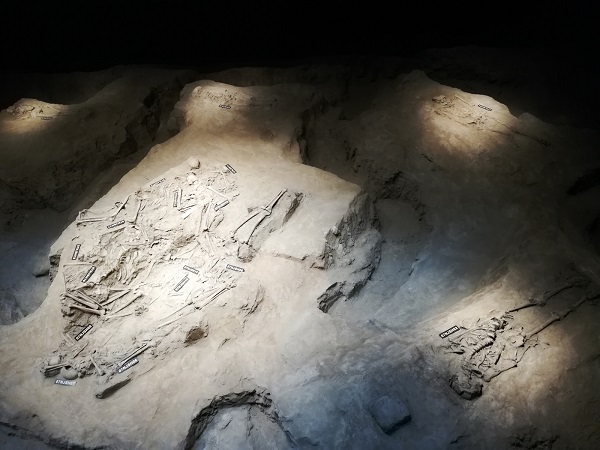
In the museum you can also see a house that was damaged by the Japanese forces. The house is well-lit by bluish light. Here is the house I am talking about-
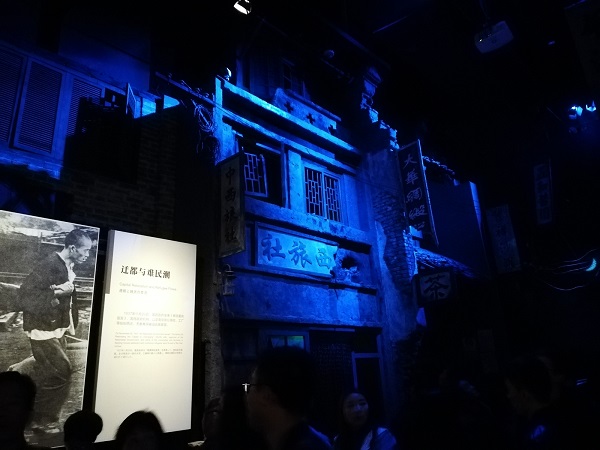
Nanjing rape and sexual crimes
Well, the massacre also witnessed other kinds of heinous crimes, such as rape.
Let me show you a statue placed outside the Nanjing Massacre Museum where a man is portrayed trying to support his wife who was raped.
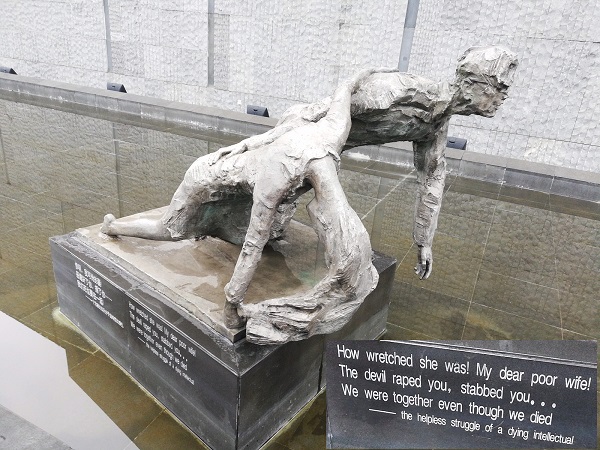
A Chinese-American author, Iris Chang, wrote the bestselling book, “The Rape of Nanking: The Forgotten Holocaust of World War II” describing the massacre and accompanying sexual crimes committed by the Japanese forces during Nanking massacre (Nanking is the former name of Nanjing).
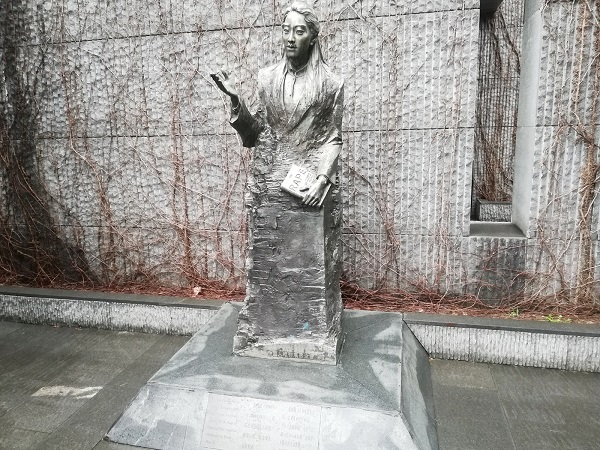
weapons used
The Japanese Imperial Army used a variety of weapons during the massacre, and now some of them could be seen in the memorial museum.
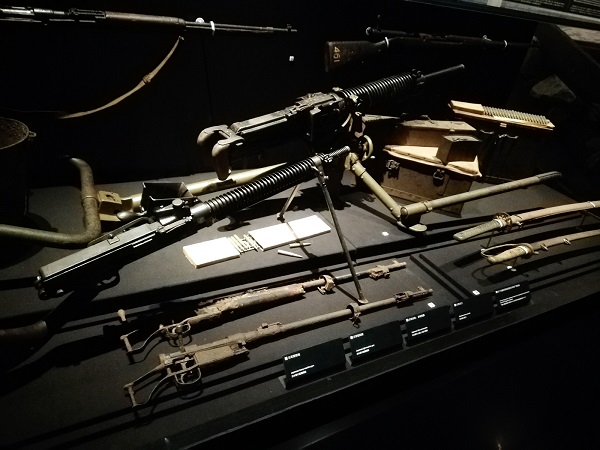
people who died
The museum provides a comprehensive list of photo and names of the people who lost their precious lives during the massacre.
Here is the photo that I clicked in the museum-
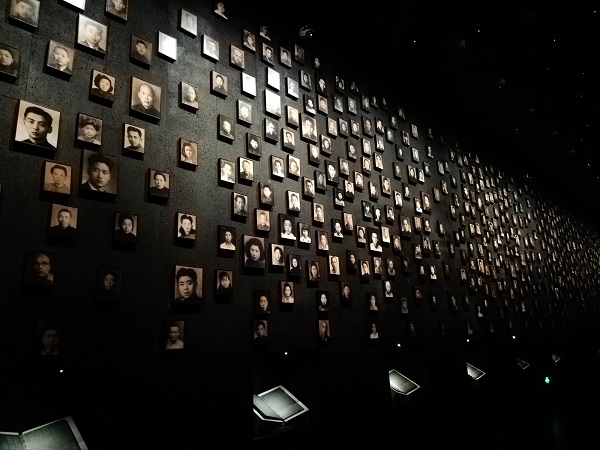
Here is the name list-
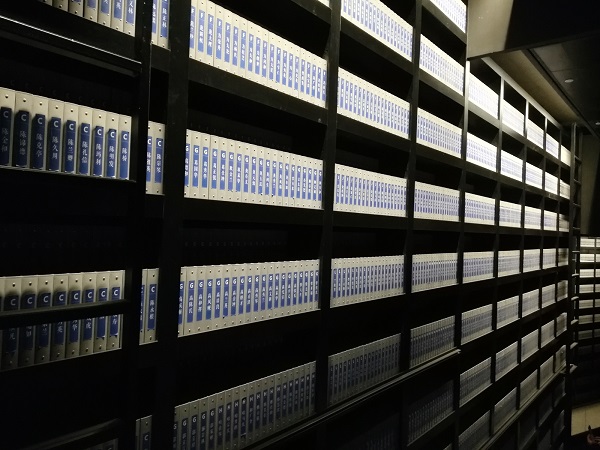
The current living peoples
The museums also displayed the names (and photos) of some of the people who manage to survive the unfortunate event and are still alive (Sep, 2017).
Here we go-
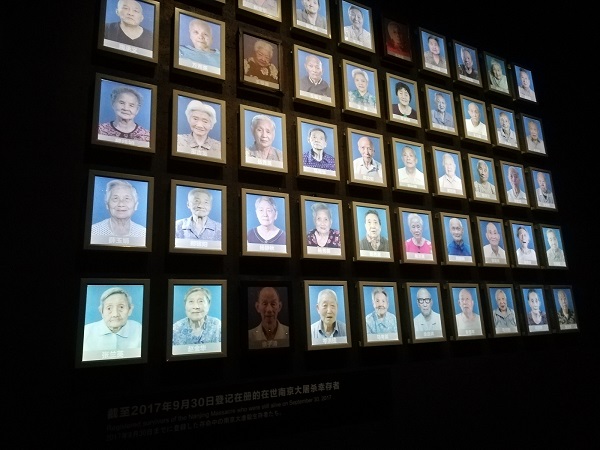
See the following photo where a mom is depicted as protecting her little children during the massacre as the overall situation was highly unsafe and worrisome.
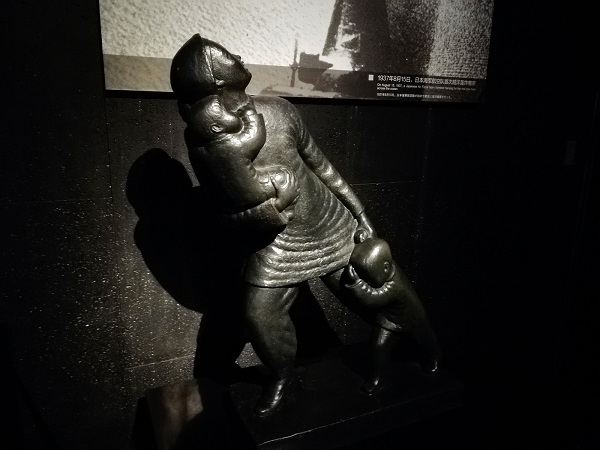
How was the reaction in Japan?
Well, based on the information available in the museum, Japan published capture of Nanjing earlier than the actual fall of the city.
Let me show you the page from a newspaper published in Japan-
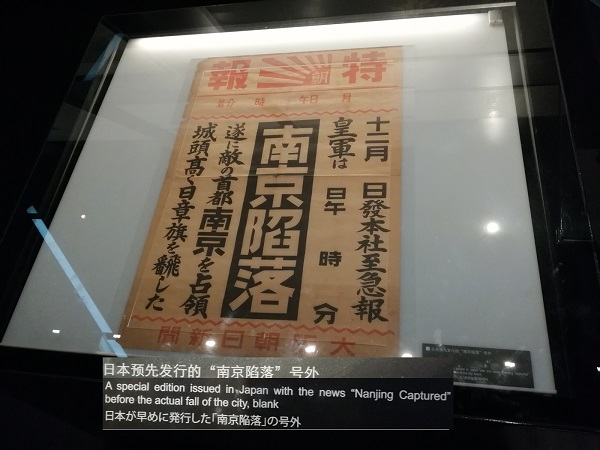
Outside the museum there a large open ground where you’ll see a brief description of the massacre. The tourist passes through the ground before entering the museum. Here is the photo-
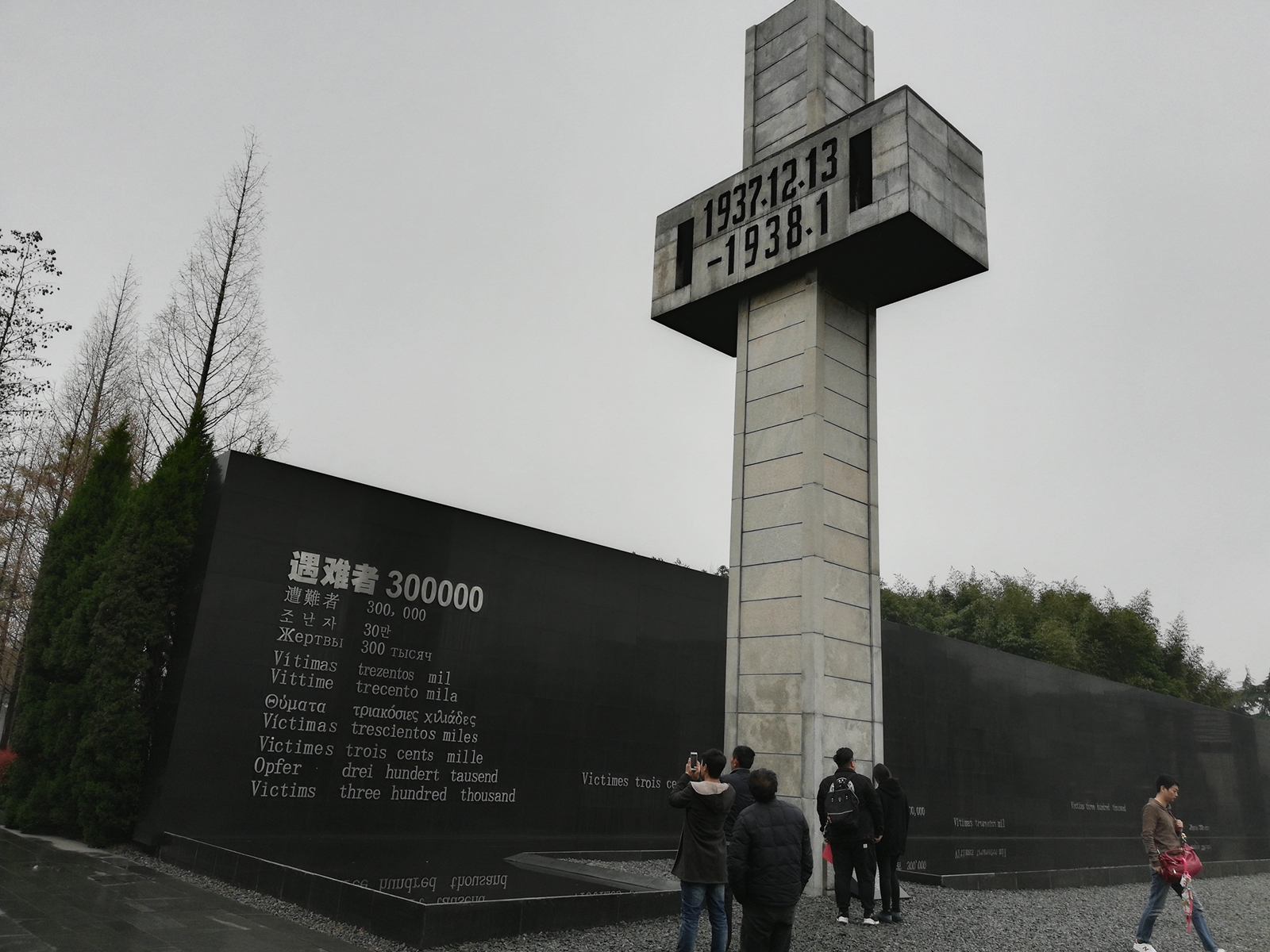
The ground is also used by China’s leaders to address the nation or crowd when they visit the museum.
Here is a photo of the Chinese president Xi Jin Ping at museum ground-
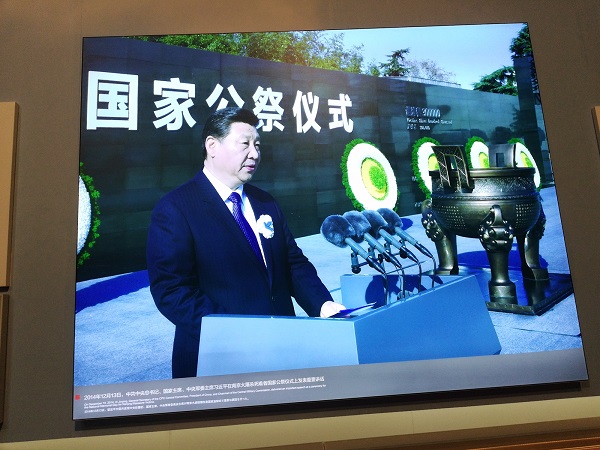
In summary, a visit to the museum is highly recommended to Nanjing travelers. No matter how much you like politics or history, the museum is bound to inspire you to support the peaceful ways of living and doing things. Frankly, the violence can never answer the problems faced by the humanity. There is just no substitute of peace.
That’s all in this post about travelling in Nanjing city 🙂
Do check out my other posts about Nanjing City (Part 1 and Part 2).
If you have any question about Nanjing city attractions, feel free to post in our forum so that others could also contribute and learn. For regular updates like us on Facebook, or follow on Twitter!
If you find the write-ups useful, don’t forget to buy me a beer!
Happy travelling in Nanjing.
Cheers!
Last updated: Tuesday, May 1, 2018